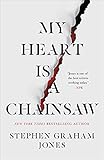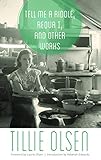The Year (More or Less) in Reading


 My fairly new home of Portland threads through this note (which in editing looks more like an unintentional literary travelogue), so I’ll start my reflection on standout reads of the past year locally with Mat Johnson’s Loving Day. As with Pym, he shows his ability to write heartaching prose while casually inserting the spectral, the surreal into the everyday. And more of that everyday appears in Chris Stuck’s Give My Love to the Savages, a collection that reads like James Alan McPherson writing in this new millennium with a bit of encouragement from Johnson. But Stuck smartly and sharply makes the body and mind familiar through exposure, the full self on display in heightened inescapable ways that are hilarious and harrowing and entirely his own. I took Chuck Palahniuk’s advice to Consider This: Moments in My Writing Life After Which Everything Was Different. You should, too.
My fairly new home of Portland threads through this note (which in editing looks more like an unintentional literary travelogue), so I’ll start my reflection on standout reads of the past year locally with Mat Johnson’s Loving Day. As with Pym, he shows his ability to write heartaching prose while casually inserting the spectral, the surreal into the everyday. And more of that everyday appears in Chris Stuck’s Give My Love to the Savages, a collection that reads like James Alan McPherson writing in this new millennium with a bit of encouragement from Johnson. But Stuck smartly and sharply makes the body and mind familiar through exposure, the full self on display in heightened inescapable ways that are hilarious and harrowing and entirely his own. I took Chuck Palahniuk’s advice to Consider This: Moments in My Writing Life After Which Everything Was Different. You should, too.


 I headed a little east toward the Oregon high desert to enjoy the hell out of Jeremy Robert Johnson’s The Loop. His earlier offering, Skullcrack City, was a batshitcrazy (okay, um, that last word didn’t redline in this doc so I must’ve reviewed it on this machine) pair of stories in one that crashed into each other in a way that might’ve birthed his latest. The Loop is a wild and frighteningly probable nightmare with an amazing teen hero named Lucy who I instantly thought of when hearing Jade share the incomparable Stephen Graham Jones’s gift of My Heart Is a Chainsaw. And though I’d already been through it twice, I wanted to write a super tight review to send off to PANK, so I took another run through his game-changing The Only Good Indians. Speaking of Indians, Oklahoma was the site of multiple iterations of Apocalypse, past, present, future, and Cherokee. Mary and the Trail of Tears by Andrea Rogers is an outstanding MG book on a brutal moment in their history that’s a necessary and wonderful read. Two thousand twenty-one NBA Finalist Brandon Hobson’s The Removed deals with dark and Darkening Land, moving over both in loving and crushing embraces, stopping along the roads at places lots of us lived in younger days and ways. Kelli Jo Ford’s Crooked Hallelujah blew me away with its instantly encircling stories that vest you in minute one. Bonus; I finally learned how to spell “a-whole-nother.” Thanks, Kelli Jo!
I headed a little east toward the Oregon high desert to enjoy the hell out of Jeremy Robert Johnson’s The Loop. His earlier offering, Skullcrack City, was a batshitcrazy (okay, um, that last word didn’t redline in this doc so I must’ve reviewed it on this machine) pair of stories in one that crashed into each other in a way that might’ve birthed his latest. The Loop is a wild and frighteningly probable nightmare with an amazing teen hero named Lucy who I instantly thought of when hearing Jade share the incomparable Stephen Graham Jones’s gift of My Heart Is a Chainsaw. And though I’d already been through it twice, I wanted to write a super tight review to send off to PANK, so I took another run through his game-changing The Only Good Indians. Speaking of Indians, Oklahoma was the site of multiple iterations of Apocalypse, past, present, future, and Cherokee. Mary and the Trail of Tears by Andrea Rogers is an outstanding MG book on a brutal moment in their history that’s a necessary and wonderful read. Two thousand twenty-one NBA Finalist Brandon Hobson’s The Removed deals with dark and Darkening Land, moving over both in loving and crushing embraces, stopping along the roads at places lots of us lived in younger days and ways. Kelli Jo Ford’s Crooked Hallelujah blew me away with its instantly encircling stories that vest you in minute one. Bonus; I finally learned how to spell “a-whole-nother.” Thanks, Kelli Jo!


 Marcie Rendon’s Cash Blackbear books Murder on the Red River and Girl Gone Missing, murder mysteries set up north, left me wanting more and I hear there’s now a third book on the way. Can’t wait. Such a smart and eminently readable series. Shane Hawk’s debut Anoka horror collection and Clifford Taylor’s spiritual Memory of Souls showcased just a taste of what Indigenous writing encompasses.
Marcie Rendon’s Cash Blackbear books Murder on the Red River and Girl Gone Missing, murder mysteries set up north, left me wanting more and I hear there’s now a third book on the way. Can’t wait. Such a smart and eminently readable series. Shane Hawk’s debut Anoka horror collection and Clifford Taylor’s spiritual Memory of Souls showcased just a taste of what Indigenous writing encompasses.

 Returning to my tour of a neo-settled unsettling south brought me to Andy Davidson’s The Boatman’s Daughter. Think Cormac McCarthy writing Ozark fan fiction. A few states east, Carl Hiaasen’s Squeeze Me was a crushingly Florida return to form that had been just out of reach in his last couple of offerings.
Returning to my tour of a neo-settled unsettling south brought me to Andy Davidson’s The Boatman’s Daughter. Think Cormac McCarthy writing Ozark fan fiction. A few states east, Carl Hiaasen’s Squeeze Me was a crushingly Florida return to form that had been just out of reach in his last couple of offerings.


 I traveled back north along with Chester Himes in Cotton Comes to Harlem, classic, funny, and sharp. To keep an eye and edge on my own writing, a couple of crafty genre works were Walter Mosley’s Elements of Fiction and Benjamin Percy’s Thrill Me: Essays on Fiction. The artsy side was satisfied by Richard Hugo’s essential The Triggering Town, which happily reminded me that sometimes words hit the page more for their sounds than their wordiness, and the logic of the music in those words can make much more sense than the logic of their textual meaning. Speaking of sorcery, I detoured on my westward way home, arriving on the Alberta prairies to read Wayne Arthurson’s novella The Red Chesterfield a couple of times; will probably make it an annual thing like Katherine Dunn’s also magical Geek Love, after I read it again next week. It’s the kind of book that makes me want to drink tea (tea!) and eat Russian wedding cookies. Under a blanket. WTF.
I traveled back north along with Chester Himes in Cotton Comes to Harlem, classic, funny, and sharp. To keep an eye and edge on my own writing, a couple of crafty genre works were Walter Mosley’s Elements of Fiction and Benjamin Percy’s Thrill Me: Essays on Fiction. The artsy side was satisfied by Richard Hugo’s essential The Triggering Town, which happily reminded me that sometimes words hit the page more for their sounds than their wordiness, and the logic of the music in those words can make much more sense than the logic of their textual meaning. Speaking of sorcery, I detoured on my westward way home, arriving on the Alberta prairies to read Wayne Arthurson’s novella The Red Chesterfield a couple of times; will probably make it an annual thing like Katherine Dunn’s also magical Geek Love, after I read it again next week. It’s the kind of book that makes me want to drink tea (tea!) and eat Russian wedding cookies. Under a blanket. WTF.


 That cozy feeling led me back to some classics here at home. Some of Patricia Highsmith’s sublime shorts collected in Eleven. Tillie Olsen’s extraordinary work gathered in Tell Me a Riddle, Requa I, and Other Works. Continuing pandemic in the U.S. urged me to reinfect with Camus’s The Plague, but after a couple dozen pages I opted to brighten things up with a reread of The Stranger. A revival of unrest and injustice in Portland led me to more Camus, so I took in The Rebel, too.
That cozy feeling led me back to some classics here at home. Some of Patricia Highsmith’s sublime shorts collected in Eleven. Tillie Olsen’s extraordinary work gathered in Tell Me a Riddle, Requa I, and Other Works. Continuing pandemic in the U.S. urged me to reinfect with Camus’s The Plague, but after a couple dozen pages I opted to brighten things up with a reread of The Stranger. A revival of unrest and injustice in Portland led me to more Camus, so I took in The Rebel, too.
It’s quiet now except for Crow O’Clock outside my window. Seems to get dark here around 4:30 in the afternoon. Not much else to do except read, I guess.
Thank god.
More from A Year in Reading 2021 (opens in a new tab)
Don’t miss: A Year in Reading 2020, 2019, 2018, 2017, 2016, 2015, 2014, 2013, 2012, 2011, 2010, 2009, 2008, 2007, 2006, 2005









